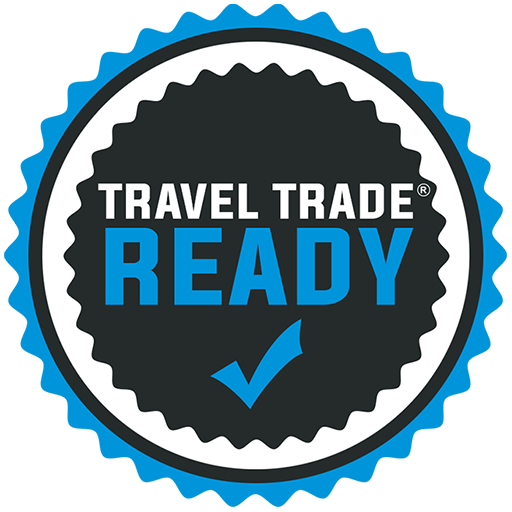Harnessing Tourism APIs for Marketing Tourist Attractions
As the travel and tourism industry continues to grow, marketing tourist attractions becomes increasingly important for businesses looking to attract visitors and generate revenue. One of the most effective ways to market these attractions is by leveraging the power of tourism APIs – so in this article, we will discuss how tourism APIs can be utilised for marketing tourist attractions, and explore additional topics that are relevant to this industry.
Understanding Tourism APIs
Before diving into how tourism APIs can be harnessed for marketing tourist attractions, it’s essential to understand what they are. Tourism APIs are Application Programming Interfaces that enable communication and data sharing between different software applications related to travel and tourism. They provide access to a wealth of information and services, allowing businesses to streamline their operations, enhance customer experiences, and improve their marketing strategies.
The Power of Tourism APIs in Marketing Tourist Attractions
Tourism APIs offer a wealth of data and functionality that can be leveraged for marketing tourist attractions. You can learn more about exactly why an API is needed in modern travel businesses, as well as the benefits of the Travel Trade Ready API for DMO’s, suppliers and buyers by clicking the relevant link – but in the next part of this page we’ll be looking at how integrating these APIs into your marketing strategy can help your business achieve the following goals:
Improved Content and User Experience
Tourism APIs allow you to access and display relevant, up-to-date information about tourist attractions, such as opening hours, ticket prices, and upcoming events. This enhances the value of your content and improves the overall user experience on your website or app.
Enhanced Targeted Marketing Efforts
The data provided by tourism APIs can help you better understand your target audience and tailor your marketing efforts accordingly. For example, you can use demographic data to create more targeted advertising campaigns for specific tourist attractions.
Better SEO and Online Visibility
Integrating tourism APIs can improve the search engine optimization (SEO) of your website or app. The provision of relevant and updated content will make your site more appealing to search engines, leading to higher rankings and increased visibility for your marketing efforts.
Additional Considerations for Marketing Tourist Attractions
While harnessing tourism APIs is a powerful strategy for marketing tourist attractions, there are additional factors to consider to further enhance marketing efforts. Let’s take a look at some of those next.
Social Media Marketing
Social media platforms are an invaluable channel for marketing tourist attractions online – in fact, SEO and social media marketing working in partnership with one another constitutes a highly effective setup for marketing to people online. By creating engaging content and interacting with potential visitors, businesses can increase their online presence and reach a wider audience. Additionally, social media platforms can be used to share user-generated content, such as photos and reviews, which can further boost the credibility and appeal of the attraction.
Content Marketing
Like good SEO and social media marketing, the ability to create high-quality optimised, informative, and engaging content which promotes your business and the destinations or attractions you offer is essential to successful online marketing. By offering valuable information about the attraction, such as history, tips, and highlights, businesses can build trust with potential visitors, making them more likely to book a visit.
Analytics and Data-Driven Decisions
Collecting and analysing data is crucial for informed decision-making and marketing strategy optimization. By monitoring key performance indicators (KPIs), such as website traffic, conversion rates, and social media engagement, businesses can identify areas for improvement and adjust their marketing strategies accordingly.
Integrating Tourism APIs into Your Marketing Strategy
To make the most of tourism APIs for marketing tourist attractions, consider the following steps:
Identify Your Goals and Objectives
Before selecting and integrating APIs, define your marketing objectives, such as increasing website traffic, boosting conversions, or improving customer engagement. This will help you determine which APIs are best suited to support your goals.
Choose the Right APIs
Research available tourism APIs and choose those that offer the functionalities and data most relevant to your marketing objectives. The Travel Trade Ready API should of course be amongst your choices, though there are probably others that will be beneficial to your business too. Consider factors such as ease of integration, cost, and developer support when making your decision.
Integrate APIs Effectively
Work with your development team to integrate the selected APIs into your website or app, ensuring that they are seamlessly integrated and do not disrupt the overall user experience.
Monitor and Evaluate Performance
Once the APIs are integrated, you should regularly monitor their performance to ensure they are effectively supporting your marketing efforts. Use analytics tools to track key performance indicators (KPIs), such as website traffic, conversion rates, and user engagement, and make adjustments as needed.
Leverage API Data for Marketing Insights
Analyse the data provided by tourism APIs to gain insights into your target audience and their preferences. Use this information to refine your marketing strategy and create more targeted, personalised campaigns for your tourist attractions.

